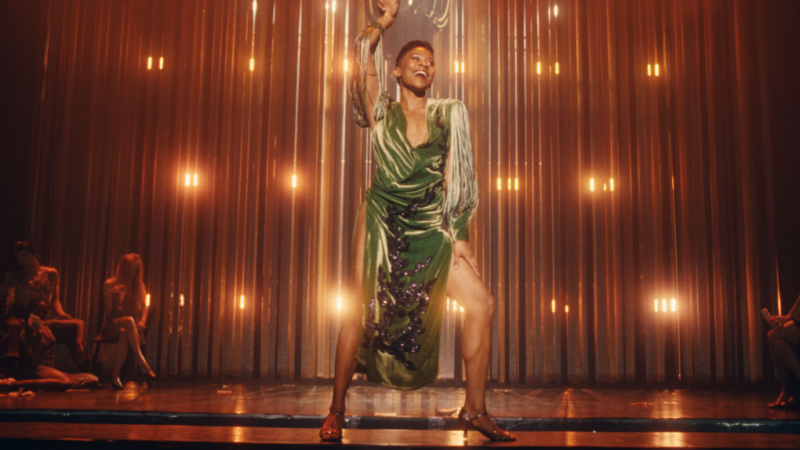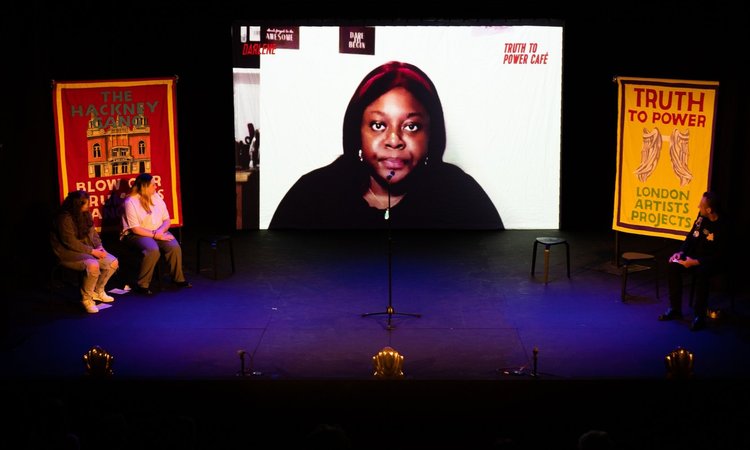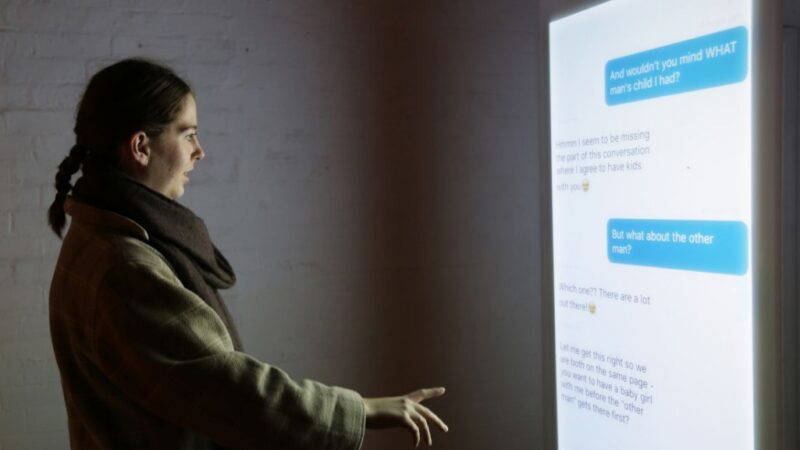Mentoring Case Study: Peter Bellingham and Sinfonia Cymru, Dion Jones and Galeri Caernarfon.

Of the successful applicants to the first Digital Mentoring Programmes in Wales, a number asked for help in exploring their approaches to ongoing digital content, and many had encountered challenges that had nothing to do with the tech. For example, negotiating licensing and copyright, or the use of metrics.
Including different perspectives on digital
The first of these companies: Sinfonia Cymru – a dynamic orchestra with musicians all below the age of 30 – perform classical and modern work in Wales and beyond. Chief Executive at the time Peter Bellingham approached The Space principally for mentoring on how to reach a younger and more diverse demographic whilst also wanting to better understand the legal situation around copyright and licensing – in Peter’s words ‘a minefield.’ Ian Ravenscroft was appointed as mentor for the company and set about working with Peter to achieve their aims.
The company give their players an active role in their programming. Peter explained the benefits of this approach: “You’re not a slave to one person’s idea, which tends to be the case when you work for a big symphony orchestra – often in those places, younger players tend to be sat at the back, being told to keep quiet.” At Sinfonia Cymru, however, the players had far more influence on the organisation’s online voice, and the lower age of the musicians offered them a massive potential advantage when it came to curating digital material aimed at a younger audience.
Another successful applicant organisation: Galeri Caernarfon – had also been actively developing new strands of digital content, with Digital Marketer Dion Jones having produced a podcast series that was enjoying consistent numbers. He had also created an online Zine made in Photoshop and Illustrator. Galeri Cearnarfon is a not-for-profit community enterprise operating as a Development Trust. They have a theatre and cinema space as well as art spaces and rehearsal studios. Dion had begun operating in his marketing role during lockdown, and although there was support from other staff, working remotely inevitably meant that a lot of the on-the-job digital upskilling was self-directed – often from public resources like YouTube tutorials. As with the staff and young musicians at Sinfonia Cymru, there was a pre-existing enthusiasm for digital creation at Galeri Caernarfon and Dion had already begun to develop an effective digital strategy but wanted to expand this by producing short form content and low-cost filming of longer-form exhibitions and talks. His mentor, Emily Brancher, was able to provide objective and supportive feedback and to reassure him that his ideas were effective and worth developing.
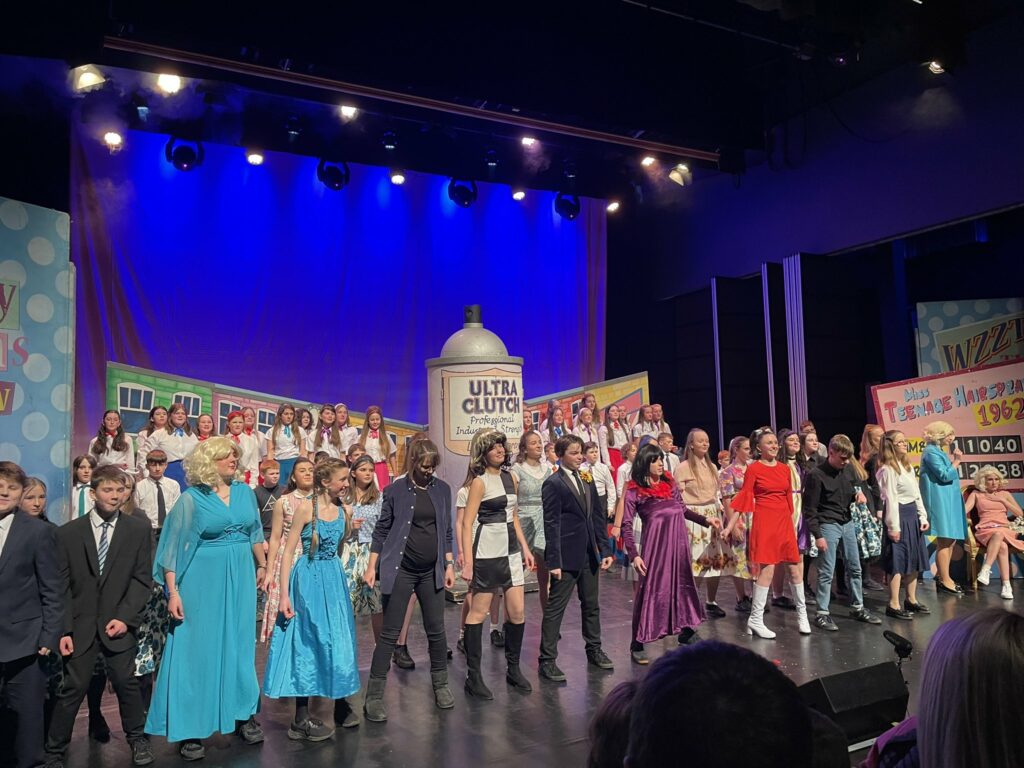
Dion appreciated the chance to step back from their work and take a moment to discuss his increased confidence around both the content and promotion, feeling less concerned about all the things that were potentially “wrong” and recognising instead what they were doing right. The objectivity of his mentor was invaluable. “Learning off the web is amazing” he explained, “But you don’t always get that interaction of: Oh, you’ve done that right… You just kind of have to figure everything out yourself. And having an outside voice really helps, as they view the material as an audience member [rather than a colleague who already knows the story].”
Dion found the process encouraging, explaining that Emily had “a very good way of making me believe in myself… making me realise that I was doing the right things.” He and the organisation were sometimes being more successful from an outsider’s point of view than perhaps they initially realised – and this extended to the digital skills he had learned. “They liked my photography – that’s something I do outside of work – and asked me why didn’t I do more photography in my [marketing] work? I was like, oh yeah, of course!”
Understanding copyright and licensing
Peter at Sinfonia Cymru, whilst wanting to build their online presence through publishing more recorded performances, was concerned about what he saw as an internet-saturated culture: where copyright is enforced in an inconsistent way with genuine “fair use” sitting alongside more cavalier or outright plagiaristic approaches to intellectual property. Orchestral and classical recording and performance in the UK is still largely functioning on a model developed by 19th century publishers of sheet music via the mid-20th century record industry’s top-down control of recordings.
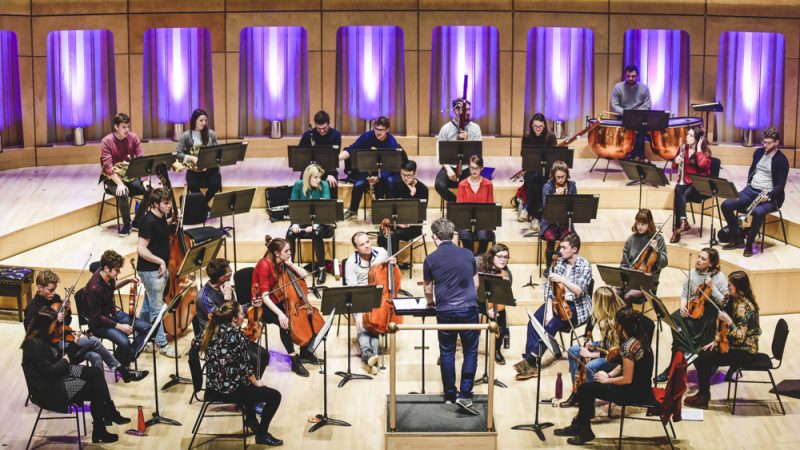
Peter found that this well-established system – while it is intended to be supportive and ensure musicians get paid properly for performances and recordings – is ad hoc in practice: “You go to a publisher and say we want to film this piece of music – how much will the sync licence be? And a figure seemingly comes out of the air. It could be £600 or it could be £20, or someone might say, don’t worry about it, we’re just delighted to get the music out there.”
Peter observed, particularly during lockdown, that there were: ‘loads of independent musicians oblivious to the need for licensing… our players weren’t aware and started putting their own stuff up there.” While there was always a risk that content could be taken down, for more informal pieces produced inexpensively, the company felt that this was a risk worth taking.
[for more information around digital rights, click here to see The Space’s digital toolkit].
Useful metrics
Sinfonia Cymru had previously published a number of filmed performances but Peter spoke of his frustration when it came to metrics. Without useful comparisons, it can be difficult for an organisation to know when they’ve done well or to set realistic targets. Small teams can lack capacity or the expertise to measure data in a way that is actionable. Recognition of these potential issues led to Sinfonia Cymru appointing a marketing officer so that they are able to expand their digital output. Via the mentoring process, they began to focus their resources towards formally evaluating what activity was already working (or not working) and crucially, to focus on the positives. Peter spoke of having increased confidence in forging ahead with their own content and promotion – of feeling less concerned about the things that were potentially “wrong” and focusing on what they could do right.
Top tips
- Build in time to evaluate your metrics, and be sure to celebrate success as readily as you recognize when things aren’t working.
- If you’re looking to develop ongoing strands of digital content, such as podcasts or videos, make sure that the work is sustainable within the resources that you have – including the time you’ll need to market it.
- The process of licensing third-party content such as music can feel inconsistent and frustrating – see our toolkit for more info on how to navigate this.
Cymraeg
Heriau ymarferol wrth greu cynnwys
Peter Bellingham a Sinfonia Cymru, Dion Jones a Galeri Caernarfon.
Gan Alistair Gentry, Medi 2022
O’r ymgeiswyr llwyddiannus i’r Rhaglenni Mentora Digidol cyntaf yng Nghymru, gofynnodd nifer am help i archwilio eu dulliau o ymdrin â chynnwys digidol parhaus, ac roedd llawer wedi dod ar draws heriau nad oedd â dim i’w gwneud â’r dechnoleg. Er enghraifft, trafod trwyddedu a hawlfraint, neu ddefnyddio metrigau.
Gan gynnwys gwahanol safbwyntiau ar ddigidol
Mae’r cyntaf o’r cwmnïau hyn: Sinfonia Cymru – cerddorfa ddeinamig sydd â cherddorion i gyd o dan 30 oed – yn perfformio gwaith clasurol a modern yng Nghymru a thu hwnt. Cysylltodd y Prif Weithredwr ar y pryd, Peter Bellingham, â The Space yn bennaf ar gyfer mentora ar sut i gyrraedd demograffeg iau a mwy amrywiol tra hefyd eisiau deall yn well y sefyllfa gyfreithiol ynghylch hawlfraint a thrwyddedu – yng ngeiriau Peter ‘a minefield.’ Penodwyd Ian Ravenscroft yn fentor i’r cwmni ac aeth ati i weithio gyda Peter i gyflawni eu nodau.
Mae’r cwmni’n rhoi rôl weithredol i’w chwaraewyr yn eu rhaglennu. Esboniodd Peter fanteision y dull hwn: “Dydych chi ddim yn sownd i syniad un person, sy’n tueddu i fod yn wir pan fyddwch chi’n gweithio i gerddorfa symffoni fawr – yn aml yn y llefydd hynny, mae chwaraewyr iau yn tueddu i fod yn eistedd yn y cefn, yn gwybod i gadw’n dawel.” Fodd bynnag, yn Sinfonia Cymru, roedd gan y chwaraewyr lawer mwy o ddylanwad ar lais ar-lein y sefydliad, ac roedd oedran is y cerddorion yn cynnig mantais potensial enfawr iddynt pan ddaeth hi i guradu deunydd digidol wedi’i anelu at gynulleidfa iau.
Roedd sefydliad llwyddiannus arall a ymgeisodd: Galeri Caernarfon – hefyd wedi bod wrthi’n datblygu llinynnau newydd o gynnwys digidol, gyda’r Marchnatwr Digidol Dion Jones wedi cynhyrchu cyfres o bodlediadau oedd yn mwynhau niferoedd cyson. Roedd hefyd wedi creu Zine ar-lein a wnaed yn Photoshop ac Illustrator. Mae Galeri Cearnarfon yn fenter gymunedol ddielw sy’n gweithredu fel Ymddiriedolaeth Datblygu. Mae ganddynt ofod theatr a sinema yn ogystal â gofodau celf a stiwdios ymarfer. Roedd Dion wedi dechrau gweithredu yn ei rôl farchnata yn ystod y cyfnod clo, ac er bod cefnogaeth gan staff eraill, roedd gweithio o bell yn anochel yn golygu bod llawer o’r uwchsgilio digidol yn y swydd yn hunangyfeiriedig – yn aml o adnoddau cyhoeddus fel tiwtorialau YouTube. Fel yn achos staff a cherddorion ifanc Sinfonia Cymru, roedd brwdfrydedd presennol ar gyfer creu’n ddigidol yn Galeri Caernarfon ac roedd Dion eisoes wedi dechrau datblygu strategaeth ddigidol effeithiol ond roedd eisiau ehangu hyn drwy gynhyrchu cynnwys ffurf fer a ffilmio ar gost isel arddangosfeydd a sgyrsiau hirach. Roedd ei fentor, Emily Brancher, yn gallu rhoi adborth gwrthrychol a chefnogol ac thawelu ei feddwl bod ei syniadau yn effeithiol ac yn werth eu datblygu.
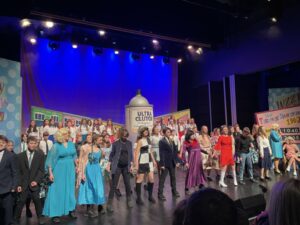
Gwerthfawrogodd Dion y cyfle i gamu’n ôl o’i waith a chymryd eiliad i drafod ei hyder cynyddol ynghylch y cynnwys a’r hyrwyddo, gan deimlo’n llai pryderus am yr holl bethau a allai fod yn “anghywir” a chydnabod yn hytrach yr hyn yr oeddent yn ei wneud yn iawn. Roedd gwrthrychedd ei fentor yn amhrisiadwy. “Mae dysgu oddi ar y we yn anhygoel” esboniodd, “Ond dydych chi ddim bob amser yn cael y rhyngweithio yna o: O, rydych chi wedi gwneud hynny’n iawn… Ti jyst yn rhyw fath o orfod ffeindio popeth allan dy hun. Ac mae cael llais tu allan yn help mawr, gan eu bod yn ystyried y deunydd fel aelod o’r gynulleidfa [yn hytrach na chydweithiwr sydd eisoes yn gwybod y stori].”
Gwelodd Dion y broses yn galonogol, gan esbonio bod gan Emily “ffordd dda iawn o wneud i mi gredu ynof fi fy hun… gwneud i mi sylweddoli fy mod i’n gwneud y pethau iawn.” Roedd o a’r mudiad weithiau yn fwy llwyddiannus o safbwynt pobl o’r tu allan nag efallai y sylweddolon nhw i ddechrau – ac roedd hyn yn ymestyn i’r sgiliau digidol roedd wedi eu dysgu. “Roedden nhw’n hoffi fy ffotograffiaeth – mae hynny’n rhywbeth rwy’n ei wneud y tu allan i’r gwaith – ac wedi gofyn i mi pam na wnes i fwy o ffotograffiaeth yn fy ngwaith [marchnata]? Ro’n i fel, o ia, wrth gwrs!”
Deall hawlfraint a thrwyddedu
Roedd Peter yn Sinfonia Cymru, er ei fod yn awyddus i adeiladu eu presenoldeb ar-lein trwy gyhoeddi mwy o berfformiadau wedi’u recordio, yn pryderu am yr hyn a welodd fel diwylliant sy’n bob man ar y rhyngrwyd: lle caiff hawlfraint ei orfodi mewn ffordd anghyson â “defnydd teg” gwirioneddol yn eistedd ochr yn ochr â dulliau mwy hamddenol neu llên-ladrad llwyr o eiddo deallusol. Mae recordiad a pherfformiad cerddorfaol a chlasurol yn y DU yn dal i fod yn gweithio i raddau helaeth ar fodel a ddatblygwyd gan gyhoeddwyr cerddoriaeth ar bapur o’r 19eg ganrif drwy reolaeth o’r top i lawr y diwydiant recordiau yng nghanol yr 20fed ganrif.
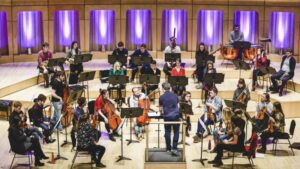
Canfu Peter fod y system sefydledig hon – er ei bod yn fwriad i fod yn gefnogol a sicrhau bod cerddorion yn cael eu talu’n iawn am berfformiadau a recordiadau – yn ad hoc yn ymarferol: “Rydych chi’n mynd at gyhoeddwr ac yn dweud ein bod am ffilmio’r darn yma o gerddoriaeth – faint fydd y drwydded sync? Ac mae ffigwr yn ymddangos o’r awyr. Gallai fod yn £600 neu gallai fod yn £20, neu efallai bydd rhywun yn dweud, peidiwch â phoeni am y peth, rydyn ni wrth ein boddau i gael y gerddoriaeth allan yna.”
Sylwodd Pedr, yn enwedig yn ystod y cyfnod clo, fod yna: ‘llwyth o gerddorion annibynnol yn llwyr anghofio am yr angen am drwyddedu… doedd ein chwaraewyr ni ddim yn ymwybodol ac fe ddechreuon nhw roi eu stwff eu hunain i fyny yno.” Er bod risg bob amser y gellid tynnu cynnwys i lawr, ar gyfer darnau mwy anffurfiol a gynhyrchwyd yn rhad, roedd y cwmni’n teimlo bod hyn yn risg gwerth ei gymryd.
[am fwy o wybodaeth am hawliau digidol, cliciwch yma i weld pecyn cymorth digidol The Space].
Metrigau defnyddiol
Roedd Sinfonia Cymru wedi cyhoeddi nifer o berfformiadau wedi’u ffilmio yn y gorffennol ond soniodd Peter am ei rwystredigaeth pan ddaeth hi i fetrigau. Heb gymariaethau defnyddiol, gall fod yn anodd i sefydliad wybod pryd maen nhw wedi gwneud yn dda neu osod targedau realistig. Gall timau bach fod heb gapasiti digonol na’r arbenigedd i fesur data mewn ffordd y gellir ei weithredu. Arweiniodd cydnabyddiaeth o’r materion posibl hyn at Sinfonia Cymru yn penodi swyddog marchnata fel eu bod yn gallu ehangu eu cynnyrch digidol. Drwy’r broses fentora, dechreuon nhw ganolbwyntio eu hadnoddau tuag at werthuso’n ffurfiol pa weithgaredd oedd eisoes yn gweithio (neu ddim yn gweithio) ac yn hollbwysig, canolbwyntio ar y pethau positif. Soniodd Peter am fod â mwy o hyder wrth fwrw ymlaen â’u cynnwys a’u hyrwyddo eu hunain – o deimlo’n llai pryderus am y pethau a allai fod yn “anghywir” a chanolbwyntio ar yr hyn y gallent ei wneud yn iawn.
Gair i gall:
- Cofiwch gynnwys amser i werthuso’ch metrigau, a byddwch yn siŵr o ddathlu llwyddiant gymaint ag y byddwch yn barod i adnabod pan nad yw pethau’n gweithio.
- Os ydych chi’n bwriadu datblygu llinynnau parhaus o gynnwys digidol, fel podlediadau neu fideos, gwnewch yn siŵr bod y gwaith yn gynaliadwy o fewn yr adnoddau sydd gennych – gan gynnwys yr amser y bydd angen i chi ei farchnata.
- Gall y broses o drwyddedu cynnwys trydydd parti fel cerddoriaeth deimlo’n anghyson a rhwystredig – gweler ein pecyn cymorth am fwy o wybodaeth am sut i lywio hyn.

How useful was this resource?

